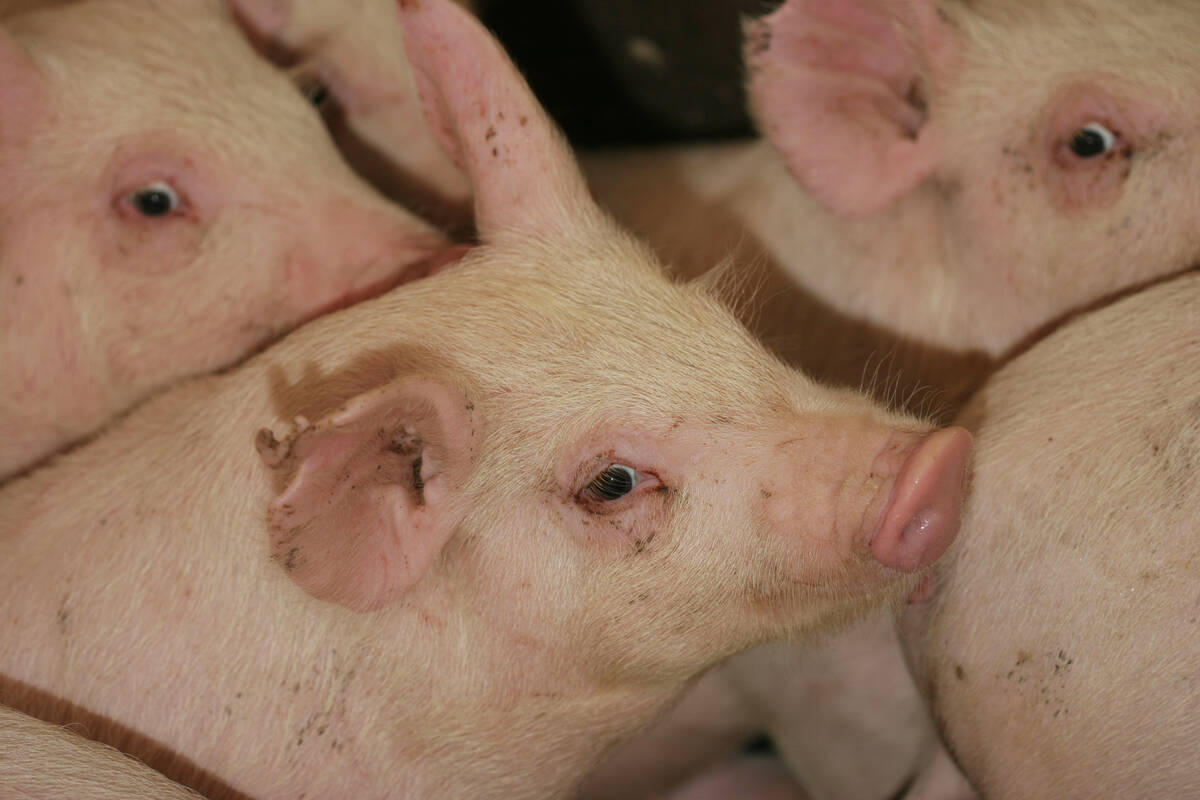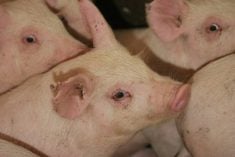Fifty young people attending a dairy judging clinic at the recent Stampede Dairy Classic in Calgary learned a doe-eyed milk cow is more than just a pretty face.
Calgary area veterinarian Gordon Atkins walked them through the Holstein scoring program, a national evaluation system to rate dairy cows on their ability to make milk, walk well and live long productive lives on the basis of their physical make up.
When these young people enter 4-H multispecies judging competitions this spring, which can include beef, dairy, sheep and horses in one session, they will know about the importance of the median suspensory ligament and understand that a 150 degree angle from the pins to the hock is the correct set for the rear leg.
Read Also

The Western Producer Livestock Report – September 25, 2025
The U.S. national live price average for barrows and gilts was $81.21 Sept. 17. It was $78.37 Sept. 9. U.S. hogs averaged $106.71 on a carcass basis Sept. 17, up from $106.10 Sept. 9.
Atkins used videos and live demonstrations to explain how each characteristic builds a perfect milker.
“We need to always have in mind that image of what is most ideal,” he said.
Atkins said an ideal dairy cow starts with the milk producing system, which makes up 40 percent of the scoring system and has nine traits.
Judges look at the suspension of the udder and note if there is a clearly defined cleft in the back. This is the median suspensory ligament, which holds the udder in place above the hocks.
“It is important for the udder to be up above the hock so it is not subject to injury,” Atkins said.
The teats should be placed evenly on each of the four quadrants, partly to make milking by machine or robot easier. If they are too close together the robot cannot find them and it is hard to manually attach the milking cups. Teat length is also important so they do not get stepped on.
The front of the udder attachment needs to blend into the body wall.
“It is the type of udder we need to be breeding for because it will last 10 lactations,” he said.
The cow needs to have a wide rump so there is room for the udder, which must have a large enough capacity so that the mammary system can support 50 to 70 litres of milk.
The potential judges were also shown how a cow’s back should slope from the hook to the pins. The pin area, which is the two large protruding bones at the back, need to slope down so the reproductive tract drains properly.
Judges watch to see how a cow walks. Incorrect feet can lead to lameness, a major animal welfare consideration in dairy barns where cows walk on wet cement.
“She needs free flowing movement where she advances in a straight line,” Atkins said.
As the cow strides forward, the back foot should be placed in the print left by the front foot. The cow should also bear more weight on the outside claw of the foot, although more lameness can be detected here because the foot takes a lot of trauma.
Bone quality should be observed. Dairy cattle tend to have flat bones that distinguish them from beef or dual purpose animals.
Judges also need to be able to assess dairy strength. This quality, which embodies femininity and strength, is difficult to quantify.
Cows should have a deep body to provide plenty of room for internal organs and a growing calf. Capacity needs to be significant so the cow can consume a lot of feed and efficiently convert it into milk.
The front end of the cow should stand taller than the rear, and the thighs should be less thick than those of a beef cow.
For Atkins, the closest thing to a perfect cow was the grand champion Holstein at last year’s Royal Winter Fair in Toronto and supreme champion of the 2008 World Dairy Expo. Named Thru lane James Rose and owned by Pierre Boulet of Quebec, this cow scored 97 out of 100 when evaluated, one of the few Canadians to achieve that high a rating.
“She is as near to a perfect cow as I remember,” he said.















